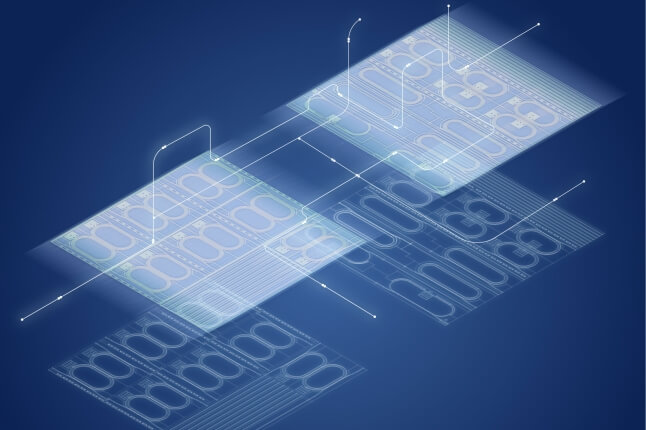News
Students build musical instruments to showcase physics knowledge
Chatter, laughter, and the sounds of various instruments being plucked and played filled the lobby of Pierce Hall on the morning of Dec. 4.
Yet, this was no music class or impromptu orchestra rehearsal. Students in the Harvard John A. Paulson School of Engineering and Applied Sciences (SEAS) course Physics as a Foundation for Science and Engineering (AP 50), had spent the past week designing and building their own musical instruments. Now, they were presenting their handiwork as teaching fellows and faculty judged the symphonic exposition.
“We kind of built a guitar-slash-banjo-slash-cello,” laughed Sophie Pesek S.B. ’20, an environmental science and engineering concentrator. Both her teammates had experience playing string instruments, so it seemed the logical route to go.
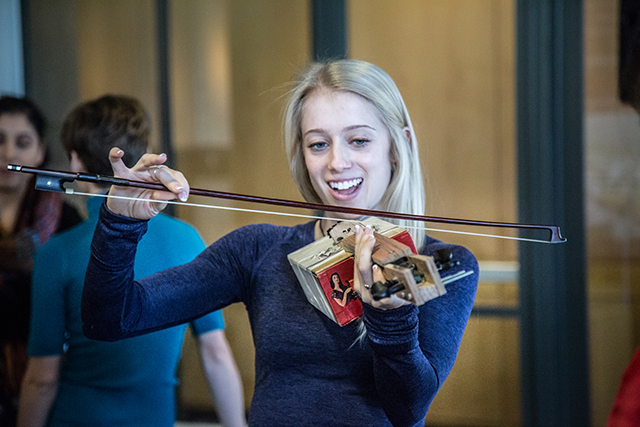
Meghan Tveit, A.B. '20, a neurobiology concentrator, tries out another team's instrumet at the AP 50 "Symphosium." (Photo by Annie Schugart/SEAS Communications)
“There were more challenges than we originally expected, but overall it was very doable,” said Jacqueline Chen A.B. ’18, an economics concentrator and one of Pesek’s teammates. “We had to reach a two-octave range with our instrument, so making sure we had enough neck-length to get a full two octaves of notes was difficult. Keeping the strings under tension and not losing their tune is hard.”
In addition to spanning at least two octaves, the student-crafted instruments needed to “hold tune long enough to be useful in a concert setting” and play “loud enough to be clearly audible in a concert setting,” according to the scoring sheet given to TFs who judged each group.
“The students get about a week to figure out how to build this instrument and they have to use the concepts of forces and waves to make this project work. It’s a very good application of what they learn in the class,” said Anvay Ukidve, a bioengineering graduate student who is also a TF for the course.
“In general, I feel that all of them have done a pretty good job, and they have not only built these instruments, but also analyzed the physics of it. It’s some really good stuff,” Ukidve said.
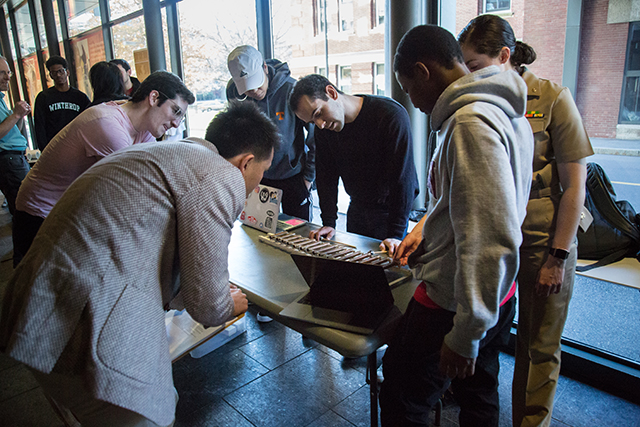
A team of students demonstrate their xylophone-like instrument for a "Symphosium" judge. (Photo by Annie Schugart/SEAS Communications)
For many, it’s less about learning physics in class and more about being able to build something tangible.
“I really love working in the Active Learning Labs, I think that’s a really fun part of the experience: actually using the tools to drill, cut, assemble, and seeing it all come together in a short period of time was really satisfying,” Chen said.
“Especially because a lot of the people in the class are not engineers, it’s really exciting and new to go into the lab,” said Pesek.
Basil Baccouche, A.B. ’20, a human evolutionary biology concentrator, felt the same way, but noted that fun projects didn’t necessarily mean easy projects.
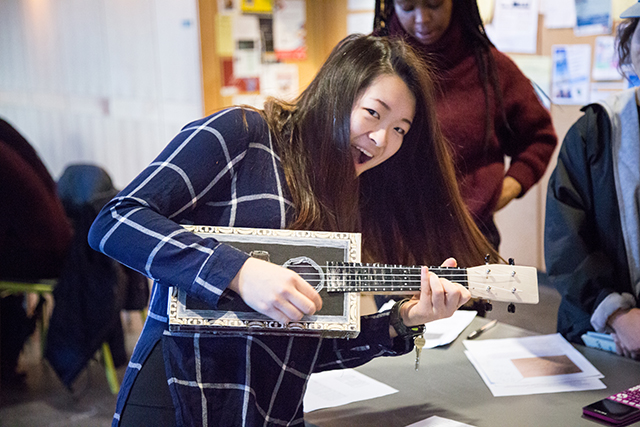
A student strums the ukulele her team designed for the "Symphosium." (Photo by Annie Schugart/SEAS Communications)
“There were a couple of bumps. We had to replace the bridge three times and sometimes hot glue wasn’t sturdy enough,” said Baccouche, whose team made a “guitar-like” instrument. Despite the challenges, Baccouche considers projects his favorite part of AP 50.
Course instructor Kelly Miller, Senior Preceptor in Applied Physics, said the assignment was really meant for students to learn about the acoustics and the physics of sound through an interactive project.
“It’s much more meaningful for the students to be able to build something and study the physics of what they’ve built than to just read a book,” said Miller. “I think it’s definitely one of the more popular projects.”
Miller smiled, looking at the animated students and attentive judges scattered around the room. “I think they’ve done a fantastic job. I’m really impressed by the projects.”
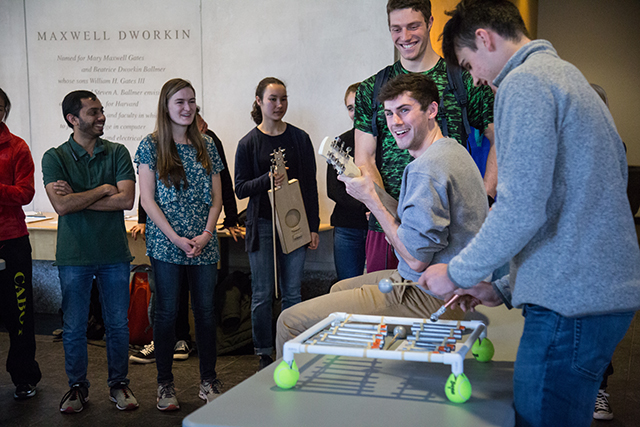
Students perform an impromptu duet for their peers. (Photo by Annie Schugart/SEAS Communications)
Topics: Academics, Applied Physics
Cutting-edge science delivered direct to your inbox.
Join the Harvard SEAS mailing list.

